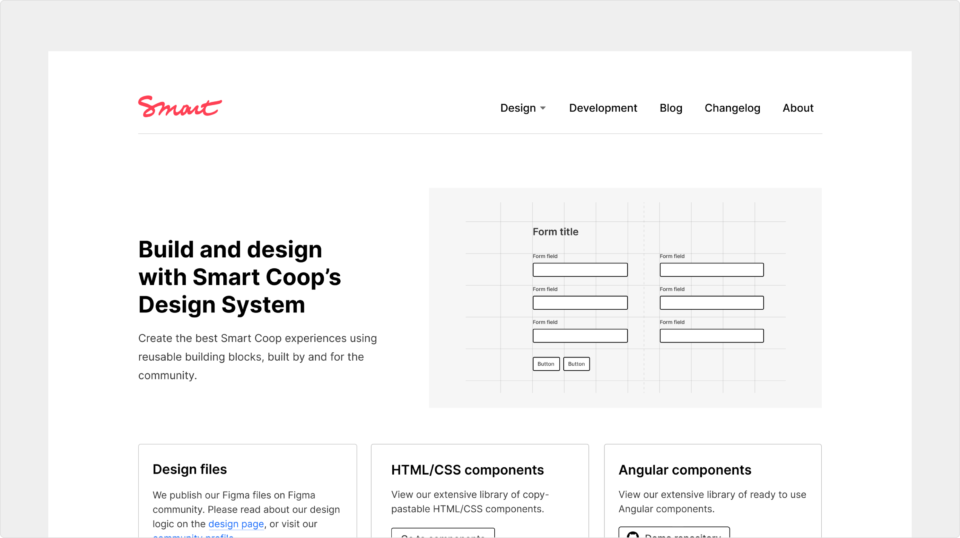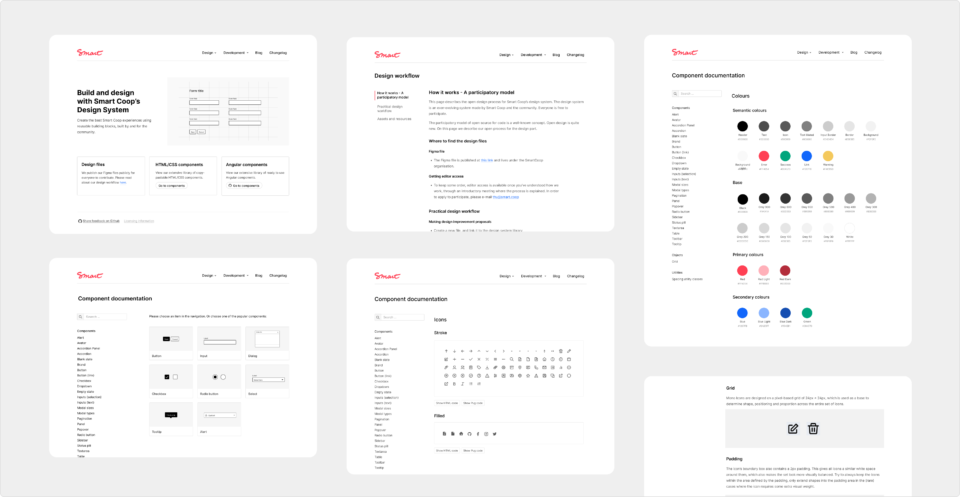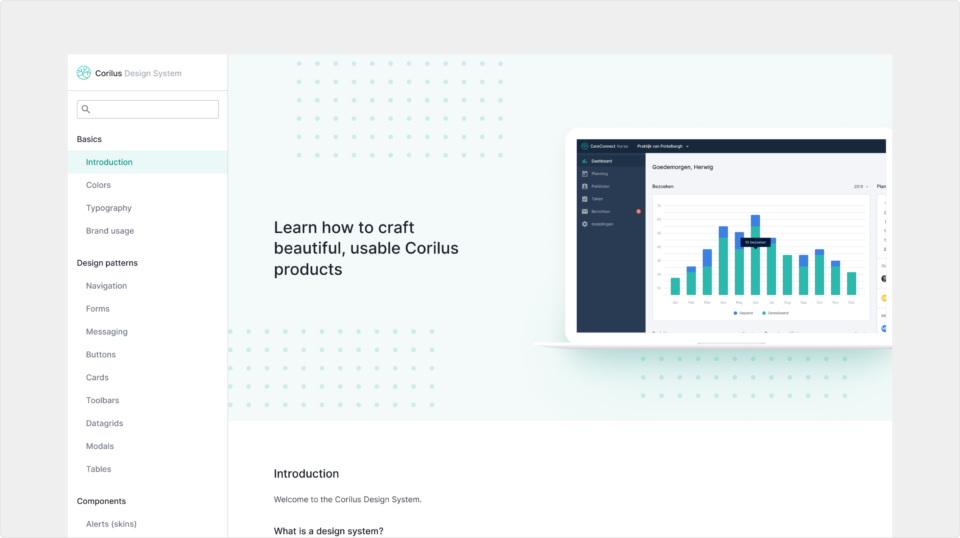Design systems: not our first rodeo
Recently, a new design systems project took me down memory lane, prompting me to revisit major design systems projects I’ve worked on.

Two projects stood out.
In 2021, we made a public design system for Smart. In this project, we focused on HTML/CSS components without JavaScript, so they could be used with any programming language — a strategy we chose due to legacy constraints. One aspect of this design system is that it's fully public — you can check it out at design.smart.coop.

Another big project that came to mind was Corilus, where we consolidated 15+ medical software products to eventually use one design system in 2018. The biggest focus of this project was using the Corilus brand in a scalable way across app interfaces that looked beautiful and worked well in a medical context.
Our templates and HTML/CSS delivery were converted into a clean React package by the dev team, leading to significant cost savings over time.

We see it time and time again; the design systems we build are used across many apps over a long period of time. From a business perspective, we see these systems as an investment in the future.
The level of investment in a design system is an organizational decision, where not every organization has the same needs. Typically, the bigger the organization, the greater the need for a system, but design systems can be useful in small organizations too.
What about the cost then? When you build them step-by-step, or cleverly reuse existing systems, it doesn’t have to be expensive. If you lean into a good front-end framework like shadcn/ui or Material Design, you can go pretty far with limited resources.
Speaking of shadcn, if you’re looking for a design system to seamlessly adopt into your product or project, check out our shadcn/ui kit for Figma, which has now been duplicated by over 7500 Figma users in the community. This kit has been a great help in designing quality user interfaces for our clients quickly, with a clear implementation path.
To conclude, it’s interesting to be able to look back in time. While Obra in its agency form is relatively young (9 months!), we have 7 years of built-up internal IP to reference. My previous company, Mono, provided similar services as Obra; and the challenge of design systems, clear documentation and great user interfaces is largely the same.

As the founder of Obra Studio, Johan's mission is to help software companies get to the next design level. He’s forever looking for the perfect balance between aesthetics and usability.